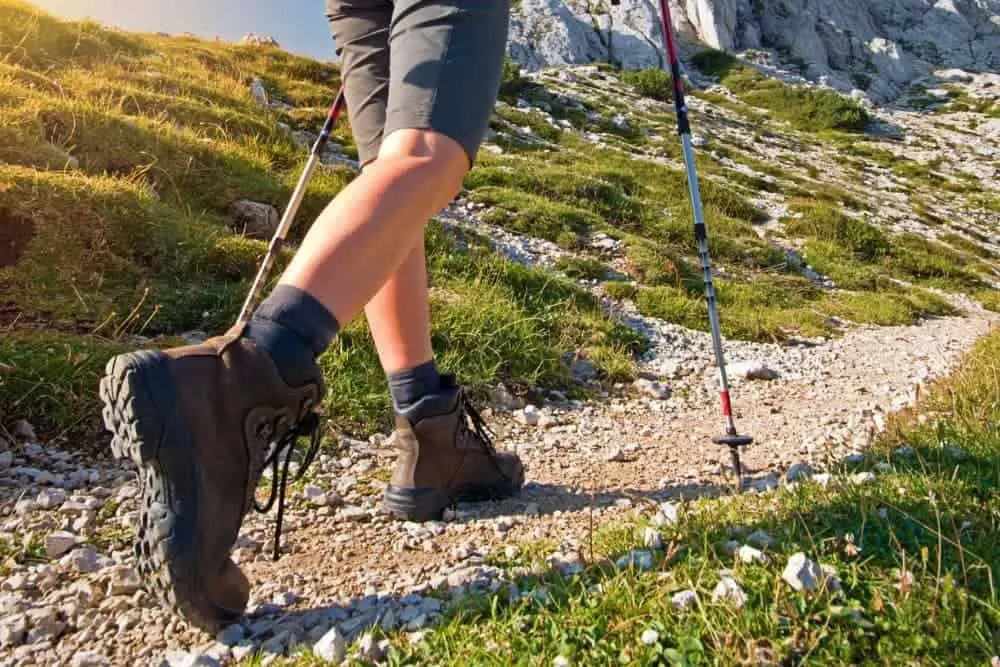We know hiking boots are not regular shoes, and manufacturers tend to make them for walking on different terrains. But should they have heels?
This is probably the question on many people’s minds. You’ve had to deal with heeled shoes all week at work or during a hang out with friends.
And your hiking experience is supposed to give you a relaxing time free of heeled footwear. So, are they necessary, or is it just one feature that hiking boots don’t need?
First, you should know that manufacturers consider a lot of things when designing and producing hiking boots. So, every hiking boots’ feature matters, and they contribute to helping you enjoy your hike as much as possible.
As for the question, why do hiking boots have heels; let’s find out in this article. We have a few reasons to show you. Also, you’ll get to know if hiking boots should have heels.
Let’s get right into it.
Contents
Why Do Hiking Boots Have Heels?
Different footwears call for various purposes, and as you know, the hiker’s boots are for hiking. Therefore, they need to have enough features that’ll make hiking great for you.
And one of these hiking boot’s features is the heel. So yes, they have a part to play in making you comfortable while hiking.
The heels are below your hiking boots’ uppers towards the back of your boots. They are usually directly below your heels when you wear hiking boots.
Also, hiking boots heels are usually between 1 to 1.5 inches, although some can be lower.
So, here are the reasons why hiking boots have heels:
1. Durability
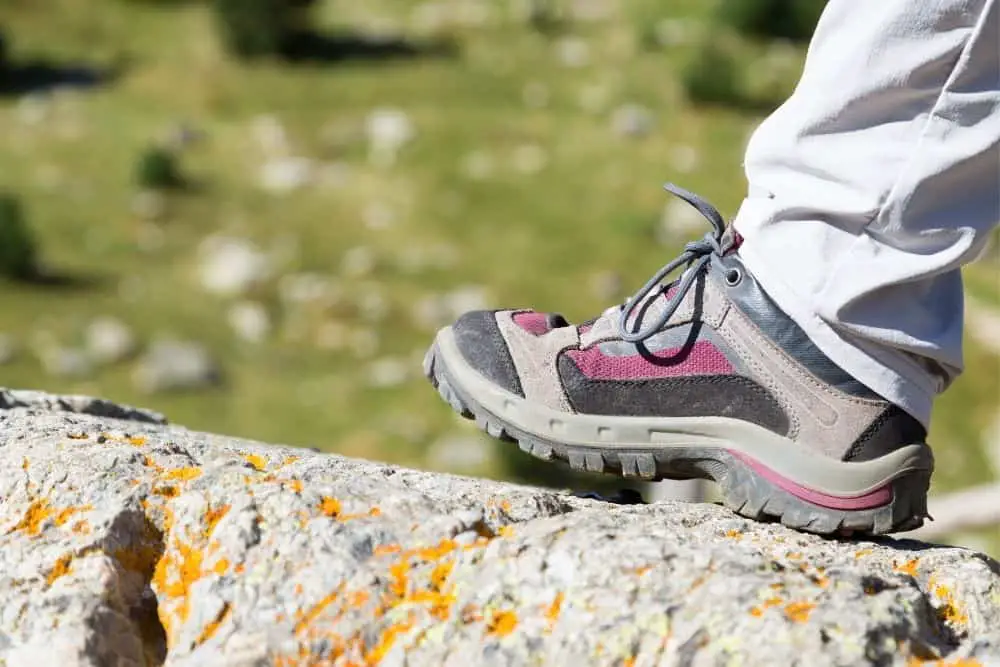
The first reason why hiking boots have heels is that they help contribute to the boots’ durability. With heels, you can walk several miles without worrying about buying a new pair of hiking boots because of worn-out soles.
So, you should understand that they help preserve your hiking boot lifespan. When hiking, you’d walk on a lot of terrains, and for miles which will result in friction. And friction can make footwears’ soles thin.
So, the more you wear them, the faster its sole gradually weakens. For instance, if you wear flat-heeled walking shoes for hiking, you can say goodbye to them pretty soon because the sole flattens quickly.
However, heels help ensure that you wear your hiking boots for a more extended period. This is because they are thicker and would take a longer period to wear off.
Pro
- Longer hiking boots lifespan.
2. Support
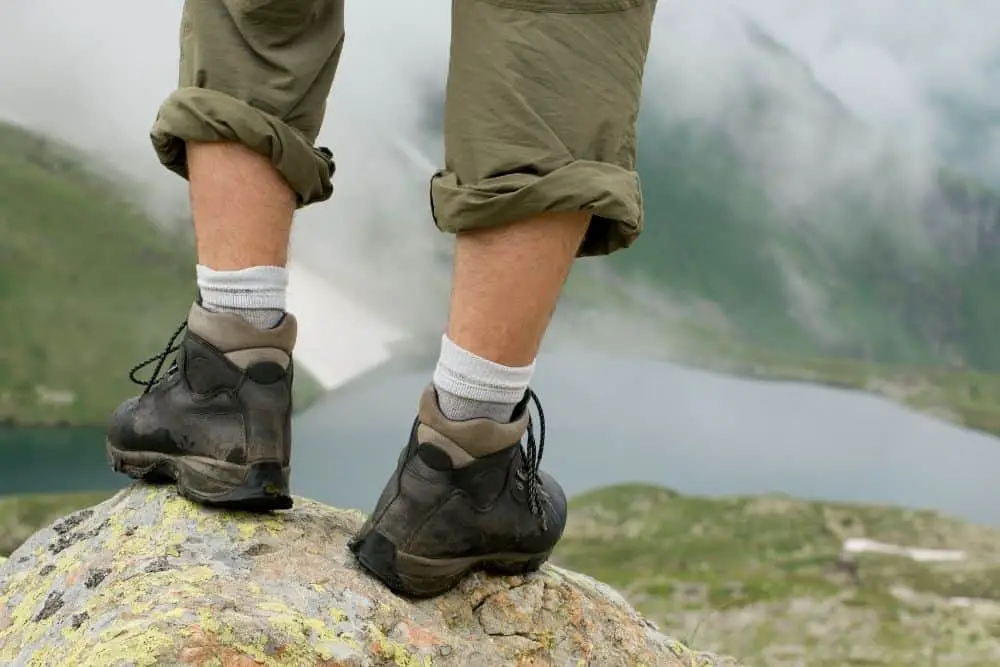
Hiking boots’ heels vary from 1 inch to 1.5 inches, and they help support your ankle and weight while you’re hiking. Your ankles are essential to your hike because they bear your weight while hiking.
Therefore, this is why manufacturers, when designing hiking boots, pay attention to ensuring that you don’t have any issues with your ankles. So, one way to ensure that your ankles are good, don’t twist or sprain is to guide them from different angles.
Also, they support your weight when you want to climb or walk different rugged terrains. Likewise, they provide arch support for people with flat feet who want to walk on rough terrains. Again, it helps to give them proper support while reducing pain and improving their foot shape.
Simultaneously, they protect your feet from supination and overpronation.
Supination happens when you lean excessively on the outside of your feet, while pronation occurs when you bend more on the inside. And the heel on hiking boots helps your legs, heel, ankle, and knees align straight.
If they don’t, it may result in excess supination or overpronation. As a result, one side of your hiking boots’ sole will flatten in (pronation) inside or outside the boot (supination).
But, with the heels, your feet get to balance, so you don’t have to go through that.
Deciding which inch to go for depends on your hiking purpose and trail. If you only want to go for a day or lightweight hiking, a 1-inch heel should give you the support you need.
However, if you’re aiming at harsher terrains, heavyweight backpacking, and longer hiking durations, you could go for 1.5 inches for better support.
Pros
- Foot protection and support: Heeled hiking boots support your feet when you walk on different terrains. Plus, the heels help to protect your feet from slipping when walking on uneven terrain.
- Helping straighten your walking posture: to avoid arch issues, supination, overpronation and other foot issues.
3. Comfortability
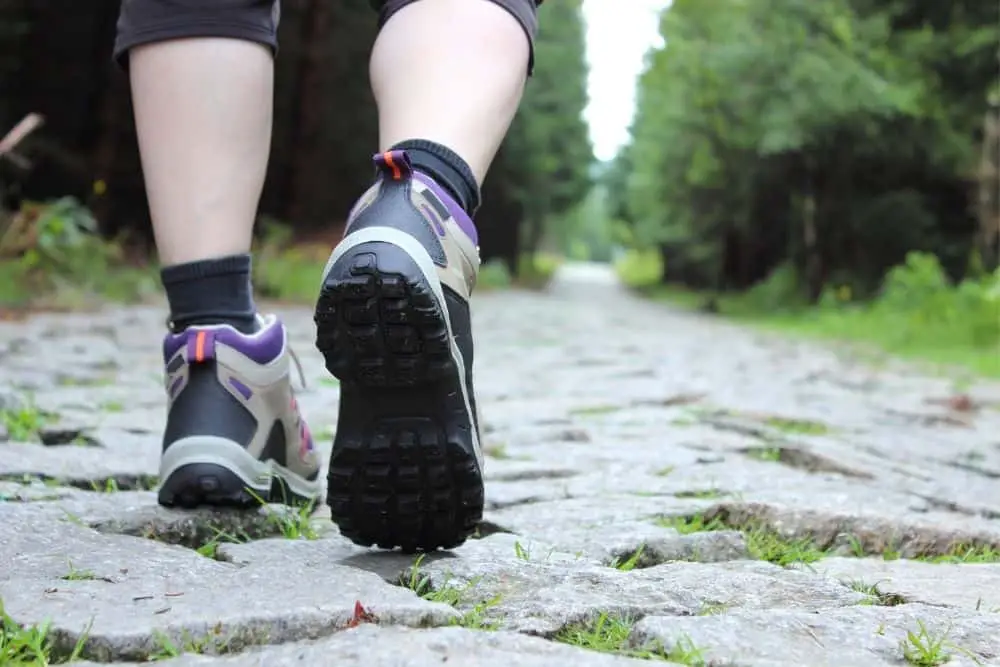
Manufacturers added heels to hiking boots to make you more comfortable when hiking. For instance, heels balance your feet in the boots when hiking on different terrains.
It raises your feet to the perfect arch that helps hold your stance firm on the terrain.
So when you wear heeled hiking boots, you enjoy more relaxing walks on different terrains and during varying weather conditions. Also, it helps to keep your back straight when hiking.
Pro
- Comfortable and more enjoyable hike
4. Stability

Hiking boots heels provide the stability that you need for a good hiking experience. In addition, they give good traction, proper elevation and aid the climbing process.
You’ll agree that hiking terrains aren’t the same; some can be rougher than the others – making the need for various heel sizes in these boots.
This ensures your foot grip on the ground, so you don’t fall or slip when hiking. The heels support your feet when you go up and down on steep terrains, keeping your feet stable appropriately.
So, whether you walk through muddy terrains, dry ground, or rocky areas, you can be sure that your feet get enough elevation.
Also, heels help provide extra distance between your feet and the ground to protect water, rock, or dirt from getting in your boots.
Pro
- Good balance and easier climb
5. Extra Shock Absorption
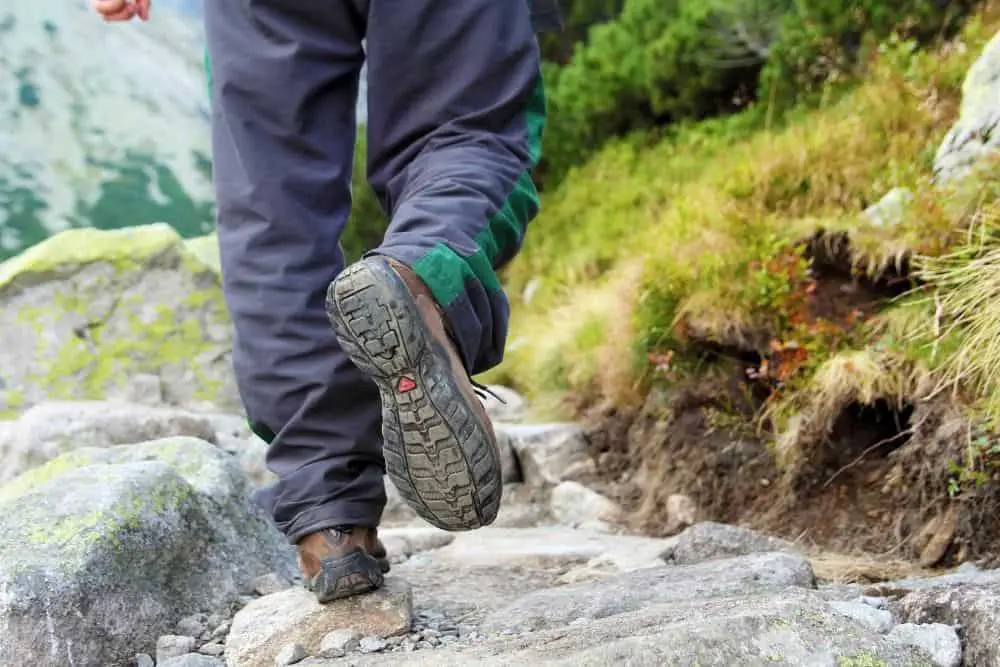
The truth about hiking boots is that you won’t only use them on surfaces that are flat and smooth. In fact, most of your hiking sessions would be on rugged or rocky terrains, and that’s where the heels come into action.
Like your rubber outsole, plates, and midsole, the heels help to add extra shock absorption on rocky terrain. In other words, the heels help to soften the impact of your feet coming in contact with the ruggedness of terrains.
Pros
- Prevents possible foot injury.
- Reduces foot pain
Should Hiking Boots Have A Heel?

The simple answer is yes. As earlier stated, the heels provide extra ankle and arch support for you when you’re hiking. Plus, they also help to improve your foot shape. Usually, when you stand barefoot on a plain surface, your feet don’t balance properly.
However, when you hike, you get to walk on different imbalanced surfaces, and you’d need your feet to balance on them, so your stance is solid. So, your footwear has to compensate for that, hence, high heeled hiking boots to improve your foot shape.
One good thing about wearing heeled hiking boots is that they are not bad for you, as long as they aren’t too high. They could lead to bunions, foot fractures, ankle pains, and foot fractures if they are.
So, when buying high-heeled hiking boots, ensure you keep them within podiatrist recommendations which are at most 1 to 1.5 inches high. Boots higher than that could make hiking uncomfortable for you or put you at risk of injuries or pains.
Conclusion
You would agree that one of hiking boots’ features manufacturers add to boost traction are the heels. Not only do they provide good traction on different terrains, but they also make for additional ankle support.
More than that, they have other benefits they serve for you. However, while they can be good for you, these heels also have some reverse sides that may make you rethink the benefits.
This article discussed the reasons why manufacturers include heels in hiking boots, as well as their cons. It also answered why hiking boots need heels as part of their features.
More importantly, you should ensure that they are not above 2 inches high when getting heeled hiking boots. This is because anything higher than that could be bad for your foot and body health. If you experience any discomfort from wearing heeled hiking boots, you can talk to a doctor.

